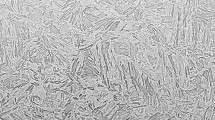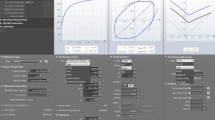Abstract
As a non-detachable and point-acting joint, thermoplastic staking is primarily used for the production of electronic and sensor elements as well as for the joining of components in the automotive interior and exterior. Commonly, the advantages of staking processes are its cost-efficient and seemingly simple process control. Regarding the industrial application, staking is principally a well-established forming process. However, despite the high number of applications, the joint design and the process settings are mainly based on extensive empirical tests. At present, the FE simulation of these thermoplastic staking processes is not state-of-the-art. Due to these facts, within the frame of the paper, these gaps are to be closed by the computer-aided modeling of the hot forming staking to map the heating and forming behavior of this process close to reality. This procedure demands the associated experimental validation of the simulation. In summary, the numerical model shows high conformity to the experimental data and allows a simulative mapping of the morphological characteristics of the riveted joint as well as indicative statements to the process parameters, which means in particular the minimal heating time for forming and the optimized post-heating time for a morphological homogenization.
Access this chapter
Tax calculation will be finalised at checkout
Purchases are for personal use only
Similar content being viewed by others
References
Härtel S, Brueckner E, Awiszus B, Gehde M (2020) Development of a Numerical Model of the Hot Air Staking Process Based on Experimental Data. Appl Sci 10:7115
Brueckner E (2021) Thermisches Kunststoffnieten – Verfahrensablauf, mechanische Eigenschaften, Versagensverhalten. PhD thesis, Technische Universität Chemnitz. https://nbn-resolving.org/urn:nbn:de:bsz:ch1-qucosa2-735102
Brückner E, Gehde M, Jahnke T et al (2015) Konstruktions- und Prozessoptimierung von Kunststoffnietverbindungen, gemeinsamer Schlussbericht der Forschungsstellen zu dem IGF-Vorhaben, Technische Universität Chemnitz - Professur Kunststoffe, Reportnr. IAIF17997BR, Förderkennzeichen AIF17997, Technische Informationsbibliothek (TIB). https://www.tib.eu/de/suchen/id/TIBKAT%3A866664661
Behrens BA, Bouguecha A, Götze T (2010) Simulation eines wirkmedienbasierten Blechumformprozesses. www.utfscience.de II
Brückner E, Gehde M. Analyse des Prozessablaufs beim thermischen Kunststoffnieten am Beispiel von Polypropylen. In: Technomer 2017–25. Fachtagung über Verarbeitung und Anwendung von
Hahn O, Finkeldey C (2004) Warmluftnieten von langglasfaserverstärkten Thermoplasten mit beschichteten metallischen Werkstoffen, Berichte aus dem Laboratorium für Werkstoff- und Fügetechnik, vol 63. Shaker Verlag, Aachen
Etemadi S (2012) Entwicklung einer praxisnahen Methodik für die Simulation des Clinchklebeprozesses. PhD thesis, Universität Paderborn
Gerstmann T, Awiszus B (2020) Hybrid joining: numerical process development of flat-clinch bonding. J Mater Process Technol 277:116421
Park H-S, Nguyen TT (2015) Development of infrared staking process for an automotive part. Mater Sci Eng 95:012019
Park H-S, Nguyen TT (2017) Development of a new staking process for an automotive part. Int J Adv Manuf Technol 89:1053. https://doi.org/10.1007/s00170-016-9132-0. Polymeren, Chemnitz. ISBN: 978-3-939382-13-3
Acknowledgments
This study is promoted from budgetary fund of the German Research Foundation (DFG - Project number 413515815). The authors would like to record our appreciation for this support. Furthermore, they would also like to thank the company bdtronic GmbH for their technical and advisory support.
Author information
Authors and Affiliations
Corresponding author
Editor information
Editors and Affiliations
Rights and permissions
Copyright information
© 2021 The Minerals, Metals & Materials Society
About this paper
Cite this paper
Härtel, S., Brückner, E., Awiszus, B., Gehde, M. (2021). Computer-Aided Modeling of the Hot Forming Staking Process Based on Experimental Data. In: Daehn, G., Cao, J., Kinsey, B., Tekkaya, E., Vivek, A., Yoshida, Y. (eds) Forming the Future. The Minerals, Metals & Materials Series. Springer, Cham. https://doi.org/10.1007/978-3-030-75381-8_117
Download citation
DOI: https://doi.org/10.1007/978-3-030-75381-8_117
Published:
Publisher Name: Springer, Cham
Print ISBN: 978-3-030-75380-1
Online ISBN: 978-3-030-75381-8
eBook Packages: Chemistry and Materials ScienceChemistry and Material Science (R0)




